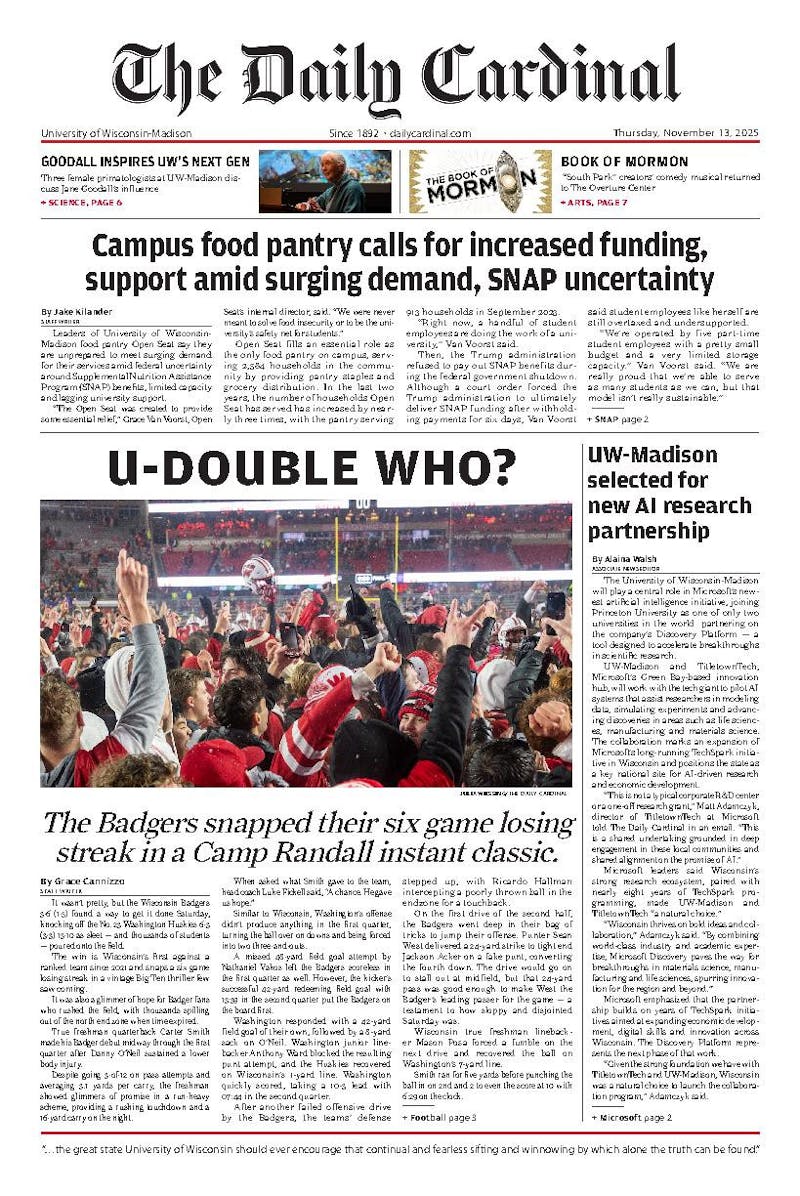Local researchers are warning against the spread of the Golden Oyster mushroom, a species native to Asia but introduced to the United States for cultivation, now spreading in Wisconsin and other Great Lakes states.
The easy-to-grow mushroom is known for its vibrant color and nutty flavor and is a popular choice for “grow kits” that allow people to plant them at home. But Aishwarya Veerabahu, a botany PhD student studying these mushrooms, said these kits have contributed to the species’ spread outside the home, pushing out native mushroom species.
Veerabahu is lead author of a report studying the effects of golden oyster mushrooms on native fungal systems. She’s currently studying the mushroom under University of Wisconsin-Madison botany professor Anne Pringle.
Veerabahu said people can help reduce the mushroom’s spread by refraining from buying or selling them.
“Fungal biodiversity has been evolving for millions of years along with plants, animals and bacteria, and we can protect that biodiversity by preventing invasive species from spreading and talking together about how we use and move around fungi in our communities,” Veerabahu said.
She said the golden oyster mushroom is currently most populous among hardwood trees, such as elm, ash, cherry, maple and cottonwood. Areas that have large amounts of deadwood, such as forests or parks are a suitable habitat for the fungus.
Removing the fungus from the environment is more difficult because of mycelium, a root-like network of filaments called hyphae that forms the body of the fungus. The golden oyster’s mycelium plays a crucial role in its life cycle; it anchors the fungus and helps absorb nutrients from the environment.
“Removing [the golden oyster mushroom] is unfortunately not possible because most fungi have an extensive network of mycelium within wood and the soil, and the mushrooms we see are just the reproductive parts that create and spread their spores,” Veerabahu said.
Beyond her golden oyster investigation, Veerabahu said Pringle’s lab conducts a variety of fungi-focused experiments.
“We research fungal biology broadly but tend to focus on invasive fungi,” Veerabahu said. “Projects in the lab investigate biodiversity, ecology and evolution of invasive mushrooms, the ecological role of specialized chemicals mushrooms produce and population biogeography of globally distributed mushrooms.”
How are fungi useful?
Mushrooms have amazing nutritional value, making a good source of niacin, pantothenic acid and riboflavin, which are nutrients found in produce as well as meats and grains. The consumption of mushrooms over time has been associated with higher intakes of vegetables and grains.
Foraging for mushrooms is an outdoor activity that anyone can enjoy, whether you are a beginner or advanced forager.
“It is completely okay to feel excited when you find them, and to continue to forage and cook them up,” Veerabahu said.
Fungi are also good byproduct recyclers; main byproduct wastes such as corn cobs, cottonseed hulls and soybean hulls can be reduced by the recycling methods that mushrooms provide.






